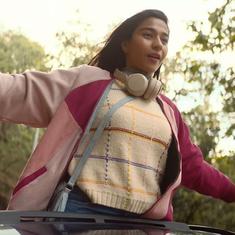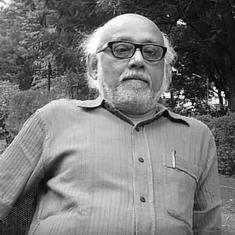After trying his hand at the traditional family sitcom in The Simpsons and zany sci-fi comedy in Futurama, legendary animator Matt Groening has turned to fantasy with his latest offering, Disenchantment. The Netflix-produced show, which released its first 10 episodes on Friday, is still finding its voice, but benefits from a glittering and diverse cast of characters and a gorgeously detailed and designed world that is a joy to spend time in.
Disenchantment, created chiefly by Groening, takes place in the absurd fantasy kingdom of Dreamland. The first season focuses on Princess Tiabeanie (Abbie Jacobson), an alcoholic, bored teenager who craves adventure. In the first episode (co-written by Groening and Josh Weinsten), Tiabenie, or “Beanie” as she is called by most of the characters, is going to be married off to a prince from a neighbouring kingdom for the purposes of a political alliance.
By the end of the first episode, a crew is set into place. The lonely, despondent Beanie is joined by the demon Luci (Eric Andre) – whom everyone else thinks is a talking cat, much to his chagrin – and Elfo (Nat Faxon), an elf who tires of the constant happiness in his own hometown and escapes to Dreamland. Beanie’s desire to flee from her sheltered life and the alliance fuels much of the first season.
Her father King Zog (John Dimaggio, also Bender in Futurama) has lost interest in most things following the death of his first wife Dagmar (Sharon Horgan) and has no time for his young son Derek or his reptilian second wife Oona (both voiced by Tres Macneille), and even less so for his daughter, whom he is unable to communicate with in anything but gruff commands.
Apart from arranging alliances for political gains, Zog is also attempting to create the elixir of life from Elfo’s blood, because legend has it that elf blood is magical.

The DNA of both of Groening’s previous shows are firmly embedded in Disenchantment, not only in the overlapping voice actors, but the similar art style and the humour. However, unfettered by the restrictions from network comedy, Groening is able to take a more adult approach. There’s drugs, sex and violence in spades.
Unlike Futurama and The Simpsons, Disenchantment has more of a serialised feel. This keeps the show chugging along at a nice pace, which it needs. The show is sometimes plagued by the familiar problem of Netflix shows, particularly comedies: each episode is too long. Plots meander, jokes fall flat and the tension that would aid the comedy is often diffused.

Over 10 episodes, the characters journey to different lands and meet a host of magical creatures, each of which seems different and interesting. There are numerous stray details packed into the background, such as a stray sign warning of a “racist antelope” outside a forest.
Sometimes the best moments come in the moments where there is no plot progression, such as when Beanie is drinking and ruminating about life or hanging out with Elfo or Luci. Disenchantment ends strongly. The last three episodes develop a narrative arc that not only satisfyingly explains all that came before but also shows promise for the future.










